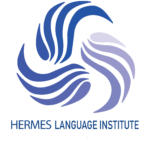Abstract
The present study was conducted to examine the relationship between the self- supervision and the self-efficacy of Iranian EFL teachers and also the relationship between the self-supervision and the self-efficacy of intermediate adult learners individually. To this end, 40 EFL teachers and 55 intermediate adult learners were selected from two branches of Kish Language Institute. In this study, “Self-Supervision checklists” were formed separately for the teachers and the learners to collect data. Common European Framework (CEF) and the Association of Language Testers in Europe (ALTE), the two internationally standard scales were used for learners’ checklists. Besides, an independent t-test was run to determine the statistical difference between the means on two sets of scores: the teachers’ self-supervision and the institutional supervision; the learners’ self- supervision and the institutional assessment. Data analysis and statistical calculations revealed a positive relationship between the teachers’ self-supervision and their self- efficacy in language teaching, and it also showed a positive relationship between the learners’ self-supervision and their self-efficacy in their language learning. Keywords: self-efficacy, autonomy, self-supervision

1. Introduction
The earlier works of the researchers such as Medgyes,1994, Braine , 1999, and Liu’s study 1999, 2001, and 2007 ( cited in Dunn & Rakes,2009), demonstrate the challenges nonnative English speaking teachers and EFL learners face in an overall framework of training and learning. Traditionally, teaching EFL was centered on practices of teacher- centeredness when according to Blumenreich and Falk (2006, pp. 865-66) the teacher works as a generator of knowledge that informs practice, a member of a professional community, an agent of social change, technician, consumer, receiver, transmitter, and implementer of other people knowledge. However, teacher-centeredness gave its place to learner-centeredness, a switch from what has become traditional classroom format in which teachers lecture and students sit passively in rows while taking notes and tests to learner-centered classes in which teachers are responsive and respectful of the diverse needs students present in the classroom (McComb & Whisler, 1997 cited in Dunn & Rake 2009). With respect to learners-centered practices, Bandura (1997) believes that if people do not believe their actions can produce the desired result, they have little motivation to act or succeed”. Bandura (1997) also claims that “Belief of personal efficacy constitutes the 1key factor of human agency” (p.3). Besides, Bandura (1997) emphasized that self-efficacy can be developed by four main sources of influence: the most powerful of all is mastery experience through which successful performance of the behavior can increase the self- efficacy for that behavior. Earlier supported by Bandura (1986, p. 391) that “Students’ judgments of their own capabilities to perform academic tasks, namely, their self-efficacy beliefs, can predict their capabilities to accomplish such task. On the other hand, one of the crucial aspects for the development of self-efficacy and enhancing achievement in students is teachers’ efficacy. According to Tschannen-Moran, M., Woolfolk Hoy, A. and Hoy W.K. (1998): it is “teacher’s belief in his or her capability to organise and execute course of actions required to accomplish successfully a specific teaching task in a particular context” (p.233). Besides, Pajares (2002) also confirmed that teachers’ efficacy that can influence instructional practices, and can predict students’ performance and self-efficacy. Thus, the present study explores the importance of self-efficacy in teachers’ abilities and students’ achievements in EFL proficiency, how the teacher’s and learner’s sense of efficacy can be enhanced through self-supervision (reflective pedagogy for autonomy) and self-assessment. As Freire (2002, p. 68) defined autonomy: “ freedom to create and to construct, to wonder and to venture. Such freedom requires that the individual be active and responsible.” Ross and Bruce (2007) clarified that the process of self-supervision includes self-assessment, self-judgment, self-reactions, self-regulating, and self-evaluation for improving achievement that contribute to self-efficacy which involves recognizing success. For this reason, this research was an attempt to consider: 1) any significant relationship between the teachers’ self-supervision and their self- efficacy, and 2) any significant relationship between the learners’ self-supervision and their self- efficacy
1.1 Self-Efficacy Effects on the Learner and the Teacher
Noted by Horwitz (1988, p. 283): ” The knowledge of the learners’ beliefs about the language learning strategy should provide the teachers with a better understanding of the students’ expectation, commitment, success, and satisfaction with their language class”. As a matter of fact, the value attributed to language learning strategies is also reflected in several different ways they have been classified. For instance, O’ Malley, J.M., and Chamot, A.U. (1985, p. 582 as cited in Yilmaz, 2010) categorized strategies into meta- cognitive, cognitive, and Socio affective but the most importance was given to the meta- cognitive strategies (i.e., those that induce planning, directing or monitoring). On the other hand, as cited in Yilmaz (2010), Rubin (1987) defines learning strategies as “… any sets of operations, steps, plans, routines used by the learner to facilitate the obtaining, storage, retrieval, and use of information”(p.19). On the other hand, in his cited article, Siwatu (2007) asserts: “Self-efficacy beliefs would indicate teachers’ evaluation of their abilities to bring about positive student change” (p. 570). Accordingly, high teacher self-efficacy has consistently been found to relate to positive learners’ and teachers’ behaviors, and has a positive influence on educational improvements (Ross, 1995; Soodak & Podell, 1996 as cited in Chan, 2008). Ross (1995) also confirms that “Teachers’ efficacy is increasingly recognized as a pivotal variable influencing teachers’ practice and students’ outcomes (p. 381)”

Besides, in2Victoria, the Department of Education and Training (2005, cited in Penrose et al., 2007) states that “Improving teachers’ efficacy has four times the [impact] on student outcomes than improving school effectiveness (p.23)”. This means that the more the efficacy of the teacher is enhanced, the more learning proficiency is achieved by the learners. In addition, it is showed that teachers’ self-efficacy influences students’ learning achievements, attitude, and is related to the organization and the atmosphere in learning environment, classroom based decision-making, and student’s self-efficacy. Additionally, “Teachers with high self-efficacy are likely to have a positive classroom environment, support students’ ideas, and address students’ needs. Teachers’ self-efficacy is a significant predictor of students’ achievement “(Ashton & Webb, 1986, cited in Schunk (2004 p.119).
1.2 Self – Efficacy and Self-Supervision
Conformably, Ross and Bruce (2007) stressed the importance of self-supervision powerful technique for improving achievement. In their theory of teacher change, they proved that self-supervision by teachers can lead to their professional growth and it contributes to expectations that guide goal setting and effort. Moreover, Ross and Bruce (2007) offered a model which represents self-supervision as the integration of several processes including: self-regulating, self-observations, self-judgments, self-reactions,… Besides, Vieira and Marques (2002) experimented that if teachers’ awareness of their action is promoted, their sense of awareness in transforming the conditions of teaching and learning is promoted, too.
2. Methodology
2.1 Participants
Two branches (no.33 in Yaft Abad & no.27 in Shahrak-e-Gharb) of Kish Language Institute of Science and Technology (k. f. o. affiliated) far in the North and the South of Tehran were randomly chosen for the research. In this research, out of 100 EFL female learners of intermediate levels at both branches, five classes with totally 55 learners were chosen. The learners were all Iranian female adults aged between 19- 50 and used Farsi (Persian language) as the national language to communicate out of the classroom whilst their native language might differ, i.e. Turkish, Kurdish, and the like. The researchers identified the learners to be homogenous since all of the learners had been evaluated in accordance with the homogeneously institutional criteria. As a matter of fact, at all the branches of Kish language institute, the learners have to attend the class each term for 21 sessions, each session of 90 minutes, the total time of 31.5 hours. Their final scores on their result sheets included class participation (out of 30 scores), workbook (out of 30 scores) and the final exam (out of 40 scores). The final score should be not less than 60 to get to the higher level. The selected learners for the research participated willingly in the research all the session but four of the learners did not attend the class regularly and became absent fail so the research was carried out on 51 learners but. The learners in all the classes enjoyed the same level of English proficiency, because the final score was 3reached through the same final exam questions and criteria for all 60 branches of the institute which could be counted as a pre-test of the research. All the learners were studying the same course. The teacher was responsible to cover the two institutionally chosen units at the intermediate levels while allocating time for supplements on grammar, vocabulary and short stories as additional self-study incentives for enhancing self- dependent language proficiency in learners and to help the learners not to be just course book- bound. However, at intermediate levels, the learners were mainly independent and used mono- language (English- English) dictionaries in the class every session. The teacher acted as a facilitator, stimulator, and elicited information but applied treatment and correction when needed. The teacher was the one responsible to follow the required lesson of the session equally scheduled for all branches. On the other hand, to do the research on the self-efficacy of the teachers through self- supervision, 40 teachers were chosen among the qualified ones teaching at intermediate levels at several branches of Kish Institute in Tehran where their supervisors could be helpful to give confidential reports on the teachers’ institutional observations. During the administration of the instrument, it was announced that all the scores and opinions of the participants would be kept confidential and have no effect on their professional and educational conditions. The participants were Iranian EFL female teachers aged between 30 – 45 years old with 3-10 years of teaching experience. The teachers had different socio- economic backgrounds. They mostly majored in different branches of such as English English Literature, English Teaching, English Translating and those teachers who did not major in English were duly qualified to teach. The teachers were all females, teaching at different adult levels. Basically, the teachers at Kish language institute received the pay- raise of the level they were teaching, and normally the teachers were awarded the pay- raise after receiving the needed briefing on three institutional observations of the level. They got the score over 650 for the TOEFL test, participated in a 40-hour T.T.C class and were teaching for over 3000 hours at all lower levels till the time of the research.
2.2 Instrumentations
The following instruments were used for the study: 2.2.1. The ALTE can do Scale The scale is based on a Standard Association on Language Testers in Europe (1992-2002) to establish an internationally standard and validated framework of the key levels of a language, and to validate a set of performance-related scales describing what learners can actually do in the foreign language. It is user-oriented in its original conception. ALTE can do statements are useful standard checklists for the self-report of what language users can do, diagnostic test tasks, activity-based curricula and teaching materials. Two checklists were formed out of the whole framework, each subscale loaded equally six items and the students were asked to score their own capabilities on a scale of 1-5 every four sessions (the 4th & the 8th). Every item was measured on a 5-point scale anchored with the notations: ‘‘ I can do this quite perfectly, I can do this adequately, I can 4do this but often need help, I have problem doing this, I cannot do this at all”, the total score of each checklist was 30


2.2.2. The CEF can do scale
An internationally validated scale derived from Standard Common European Framework of Reference for Languages: Learning, Teaching, Assessment (2001). In its words, CEF provides a common basis for the elaboration of language syllables, curriculum guidelines, examinations, textbooks, etc. CEF can have a positive impact on learning, teaching, and assessment. Therefore, a checklist was formed with 10 items to score on a scale of 1-4. Every item was measured on a 4-point scale anchored with the notations: ‘‘I can do this quite perfectly, I can do this but often need help, I have problem doing this, I cannot do this at all”, the total score of the checklist was 40 to help the learners have a standard self- assessment of their own established capabilities on the 12th session. 2.2.3. The Reference Checklist An internationally validated reference checklist of CEF can do statement was derived to help the intermediate learners studying Total English course book to check their own capabilities in English which had been required for the intermediate learners based on internationally intermediate criteria. The reference checklist would help the intermediate learners to have a self-supervision on what they were (not) able to do perfectly in English and it would help the learners to brush up the learned materials by referring to the exact page. On the 16th session, the reference checklist was handed to all the intermediate learners and was completed by all the learners participating in the research but was not collected afterwards to show the importance of self-supervision on learning processes and to have the reference checklist at ease of access.
2.2.4. The Self-supervision scale
The scale was formed mainly in accordance with the Kish institute general checklist that should be completed by the supervisor during the observation session and the criteria of the check list were fiercely expected of the teachers working at the institute. In order to form this checklist for the teachers, the board of education of Kish institute derived the notions for the criteria mainly from the books The practice of English language teaching (Harmer’s, J., 2001) and How to teach English (Harmer’s, J., 2007). The checklist has been applied fiercely since four years ago; therefore, its content was validated. The researchers also studied other checklists by Chan (2008) and Dellinger, A. B., Robbett, J. J., Oliver, D. F., and Ellett, C. D. (2008), though, the core of all efficacy scales for the teaching remained the same. This scale was used by the researchers because it could be more sensible and familiar to all the teachers working at Kish institute. The formed checklist included 20 items using a LIKERT SCALE of scoring from 1-5 showing different levels of capabilities (very strong, strong, moderate, weak, missing) and the total score was counted out of 100. The form was given to the teachers in the middle of the term. At the very beginning of the checklist, the teachers were asked to write down their personal motto in teaching, though was ignored by some of the teachers.
52.3 Data Collection
The study was carried out at two branches (no.33in Yaft Abad and no.27 in Shahrak-e- Gharb) of Kish Institute of Science and Technology far in the North and the South of Tehran between November and December 2011. This institute was selected based on credibility and feasibility criteria and also because one of the researchers has been working in 3 branches of the institute since 2001 as a teacher, supervisor and director. This language institute is among the most creditable language institutes with over 60 branches
all over Iran. Besides, the researchers benefited from warm participation and cooperation of the supervisors, the teachers and the learners. The research design was “ex post facto” because the researchers aimed at the degree of relationship between the two variables: self- supervision and EFL teachers’ self-efficacy, self-supervision and EFL learners’ self- efficacy, individually. In order to do the research, no group was chosen as the control one and to avoid Hawthorn effect, the participants were not informed of the research. Further to the questionnaires provided, the intermediate adult learners were asked to evaluate their own process of EFL learning and capabilities through internationally validated and standard criteria every four sessions. The learners were provided with a self- supervision criteria checklist by means of ALTE (The Association of Language Testers in Europe) Can Do Scale and CEF (The Council of Europe Framework) criteria.
Table 1: Comparing Internationally Standard Levels of ALTE and CEF with Those at Kish Language Institute

According to Table 1, the checklists for the intermediate learners at Kish institute were based on ALTE level 2 and CEF level B 1. The time-limit to complete each form was not more than 10 minutes, so the learners were not allowed to linger on the questionnaires to waste the time of the class. On the 16th session, a Reference Checklist was handed out to help the learners to supervise their own language capabilities and learning pace. Accordingly, 55 questionnaires of the four series of the checklists (two for ALTE checklists, one for CEF can do statement checklist and one for CEF reference checklist) were distributed, out of which 51 of each checklist were returned to the researchers. Table 2 (Appendix I) shows the complete data matrix of the learners. On the other hand, the teachers were also provided with self-supervision checklists in the middle of the term to supervise their teaching pace and compare their teaching effectiveness with reference to the institutionally required efficacy criteria of the EFL effective teachers by institutional observations. Table 3 (Appendix II) shows the comparison of self-supervision scores by the teachers with those by the supervisors. In order to be sure of the acceptable level of the reliability of the teachers’ self- supervision checklist, Cronbach’s Alpha was run. As it was concluded through SPSS calculation, the reliability of the self-supervision checklist through coefficient alpha is very high (0.91) that shows a high consistency of the checklist items. Besides, to analyze the collected data from the teachers, four assumptions of interval data, independence, normality and homogeneity of variances should be met in order to run any parametric test. Those of the first two assumptions are already met. In order to meet the assumptions of normality and homogeneity; however, some analyses had to be carried out. An independent t-test was run because there were two variables in the teachers’ data file (self- supervision and institute scaling). The only analysis which is permitted to carry out between the two files was an independent t-test to compare the mean scores of the teachers self-supervision and institute supervision. The assumption of normality, as displayed in Table 4, was tested through the ratio of skewness and kurtosis over their respective standard errors. The ratios of skewness and kurtosis over their respective standard errors were all within the ranges of +/- 1.96. That is to say the present data enjoyed normal distribution, so parametric tests could be run to answer the research questions
Table 4: Normality Test

Table 5: Descriptive Statistics of Teachers’ Self-Efficacy

As displayed in Table 5, the indices included the number of subjects (N), mean score, standard deviation and standard error of the mean. Standard deviation showed the dispersion of the scores around the mean. Both groups showed almost the same standard 7deviations. The standard error of the mean showed the mean of the population if the same study was carried out in a large scale. The above-standard teachers’ mean score of 92.30 is higher than the mean score for the standard teachers (M = 80.64). So it was concluded that the teachers who were rated by the institute as “above- standard” showed a significantly higher mean score (92.30) on self-efficacy. In other words, the teachers who were rated as “above-standard” by the institute with the mean score of 92.30 outperformed those who were rated as “standard” with the mean score of 80.64. In that case, the mean score of 92.30 might be changed by 1.39; therefore, it could be concluded that the null-hypothesis as there is not any significant relationship between the teachers’ self-supervision and their self-efficacy was rejected. Moreover, since the probability associated with the t-value, i.e. .000 was lower than the significance level of .05, it could be concluded that the difference between the two means was significant. The teachers who were rated by the institute as “above- standard” showed a significantly higher mean score (92.30) on self-efficacy. In other words, the teachers who were rated as “above- standard” by the institute with the mean score of 92.30 outperformed those who were rated as “standard” with the mean score of 80.64.
Table 6: Independent t-test Teachers’ Self-Efficacy

Table 6 included nine columns. The t-value, its degree of freedom and significance were discussed above. The Levene’s F and its significance will be discussed below ( it should be noted that Levene’s test is used in this study to compare variances of two or more groups when there are more than one group and it proves that their variances are not different). In addition, the remaining four columns represented the difference between the two groups mean scores (mean difference = 11.65). This was the difference between 90.30 and 80.64 The next column showed the difference between the two groups of standard errors of the mean. In order to calculate this figure, the difference between the two groups of scores should be calculated and then the standard error of the differences between the two means should be calculated. The last two columns showed the 95 percent confidence interval for the difference between the two means. The difference between the two means (11.65, sixth column) should lie between the lower and upper bounds of the 95 percent confidence interval, i.e. 7.57 and 15.73. As a matter of fact, the two groups of above – standard and standard teachers enjoyed homogenous variances on self-efficacy, an assumption that must be met for an appropriate independent t-test. The Levene’s F of 1.56 (Table 5) was not significant (P = .219 > .05). That is why the first row of Table 5, “equal variances assumed” was reported. On the other hand, a paired-samples t-test was run to compare the students’ mean of achievement scores on the end of the term (M = 74.21) and self-supervision tests (M=73.09). The comparison between the two means shows that there was not much difference between the evaluation of the students by the teacher through end- of- the term scales and how the students evaluate themselves through self-supervision scales
Table 7: Descriptive Statistics Students’ End of Term and Self-Supervision

However, in order to analyze the collected data Table 7, the indices included a number of subjects (N), mean score, standard deviation and standard error of the mean. Standard deviation showed the dispersion of the scores around the mean. Both groups showed almost the same standard deviations. The standard error of the mean showed the mean of the population if the same study was carried out in large scale. In that case, the mean score of 74.21 might be changed by 1.52 for the end of the term evaluation scales and the mean score of 73.09 might be changed by 1.26 for the self-supervision scales. Based on the results in Table 7, it can be concluded that there is a significant relationship between the students’ mean score of the-end-of- the term (M= 74.2) and the mean score of their self-supervision evaluations (M= 73). However a paired-sample t-test (Table 8) was run to compare the students’ mean scores on the end of the term (M = 74.21) and self-supervision tests (M=73.09). The comparison between the two means showed that there was not much difference between the evaluation of the students by the teacher through end- of- the term scales and how the students evaluate themselves through self- supervision scales. However, normality test will be discussed in Table 9
Table 8: Paired-Sample t-test Students’ End of Term and Self-Supervision Tests

Table 9: Normality Test for Students’ End of the Term and Their Self-Supervision

As Table 9 showed, all of the ratios of skewness and kurtosis over their respective standard errors are within the ranges of +/- 1.96 which showed normal distribution
4. Discussions
The findings, aligned with what was hypothesized, confirmed the ideas of other researchers on the importance of self-efficacy for teachers and learners. The most popular of all research on the importance of self-efficacy was that by Bandura(1986). Thus, it is interesting and beneficial to EFL teachers and educators to know that there is a relationship between their self- supervision and their self-efficacy, and that their self- efficacy can affect learners’ achievements. On the other hand, applying learning strategies by the learners can enhance their own capabilities in self-supervision and thus, lead to high level of their self-efficacy. In this trend, Rubin (1987) defined learning strategies as “… any sets of operations, steps, plans, routines used by the learner to facilitate the obtaining, storage, retrieval, and use of information”(cited in Horwitz,1988, p.19). Therefore, knowledge of the learning strategies has received great importance. Besides, Yilmaz (2010) believed that students’ judgment of their capabilities to perform academic tasks, namely, their self-efficacy beliefs, can predict their capabilities to accomplish such tasks. Regarding EFL practices
and the importance of self efficacy in learning outcomes, Defeu (1995) verified the language as the knowledge transferred to the learner and this transfer is most carried out through the use of a textbook and the teacher should act as a mediator between the learners and the textbook in order to control the process. That is why teachers’ efficacy is of great importance.
5. Conclusion and Implications
The results of this study could provide major implications which emphasized the relationship between self-supervision and the self-efficacy in EFL teachers and EFL learners individually; the higher is the self-supervision, the higher is the sense of self- efficacy. In this regard, the findings in this study could verify the work of other scholars and researchers who practiced self-supervision through autonomy, self–assessment and learning strategies. As a matter of fact, according to the recent research, teachers with higher sense of self-efficacy are likely to have a positive classroom environment, support students’ ideas, and address students’ needs: “Teachers’ self-efficacy is a significant predictor of students’ achievements” (Ashton and Webb, 1986, cited in Schunk, 2004, p.119). In other word, teachers with higher sense of self-efficacy inspire the learners more. Accordingly, the study by (Ashton& Webb, 1986 as cited in Schunk, 2004) proved that the teachers with a higher sense of efficacy use more encouraging comments in comparison to teachers of low sense of self-efficacy and teachers of high sense of self-efficacy use more respectful phrases that mitigate the critics on the shortcomings. Also the result of the research emphasized the idea of Bandura (1986) that perceived self-efficacy is a strong predictor of behavior. In sum, the researcher hopes that the present study could be a step toward capturing the relationship between the self-supervision and the self-efficacy of EFL teachers and of EFL learners’ individually in language achievements. However, it is important that the findings of the current study must be treated with caution. To the researchers’ best knowledge, this was the first attempt to explore the relationship between self-supervision and EFL teachers’ and EFL learners’ self-efficacy individually in an institutional context. Thus, this study should be replicated to find out whether similar results can be obtained in other language institutes or not. In addition, in this study, the choice of the teachers’ and the learners’ gender was imposed due to Islamic restrictions. However, with respect to the participants’ gender, the research should be done with sufficient numbers of participants of each sex since the researcher of this study had no access to enough male ones. This study was also carried out on a small sample size and the generalizing the findings based on a specific sample of Iranian EFL teachers and EFL learners would not be applicable to the wider population.
6. Suggestions for Further Research
According to the research, it should be suggested that if appropriate conditions and requirements are met for EFL teacher educators, they will surely ‘‘kill two birds with one stone’’. These conditions can call on EFL teachers to come to the job armed not only with deep knowledge of content, skills, and how the EFL learners learn, but also with the understanding of how to apply teaching strategies to the diverse learners in such ever- changing situations of our contemporary life. It is important for the EFL teachers to learn how to put teaching and learning theories into practice and how to deal with the complex11issues of EFL education. Engaging in inquiries can thus help teachers get a feel for what it means to be a questioner, a knower, and a doer. In fact, by experiencing themselves as learners in this way, teacher researchers gain an understanding of how to better facilitate their own students’ learning. That is, by facilitating the development of more learner- centered classrooms, the teacher educators may in turn create teachers who care more about the effects of their teaching practices on learners and how the teachers can inspire learning strategies in learners to enhance the learners’ self- supervision which results in their self- efficacy, the ability to perform a task. By addressing learner-centeredness and concerns related to student outcomes, teacher educators may take important steps towards producing more caring, qualified, learner-centered teachers. Regardless of the teachers’ sex and age, the production of such teachers can be a national educational goal worth striving for both in research and in practice in Iran. As strong self-efficacy has an impressive outcome, self-efficacy beliefs of teachers can be raised by a specific training programs at the language institutes. However, it should be noted that the only tool in this research was the application of check lists at regular intervals, though it is suggested that further studies should also include other qualitative tools such as interviews, exchange of the learners’ scores between branches, teachers’ lesson plans and teachers’ and learners’ class diaries which might help and provide further insight into the self-assessment, self-supervision which leads to the self- efficacy of specific groups of teachers and learners. As the research was limited to EFL teachers and learners, it will be recommended that the other researches be conducted with different samples and candidates in different subject-areas



